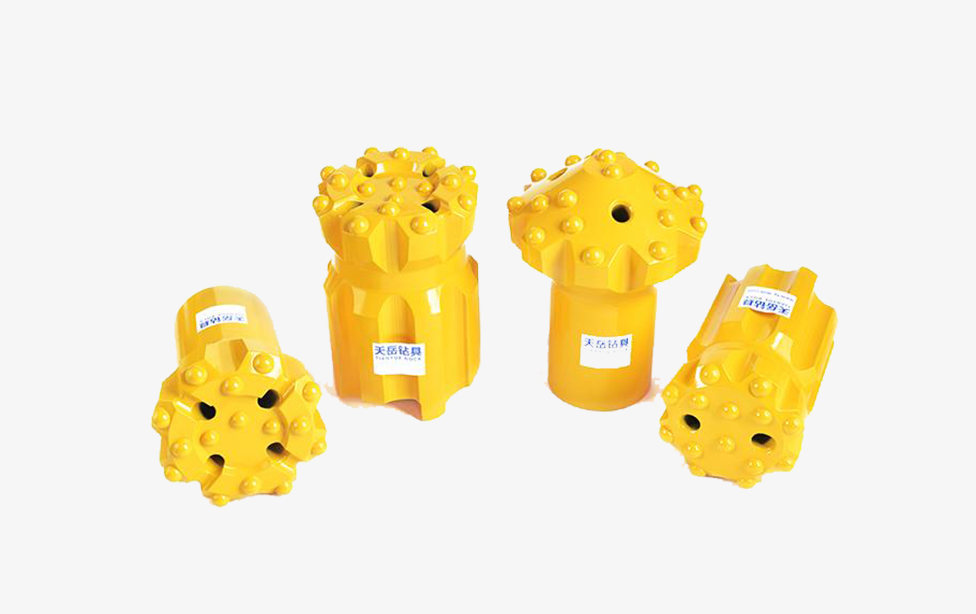R32 Drill Bits And Drill Rods
Types and Features:
BITS:Tapered system is a further development of the integral system. It features various sizes of bits in diameter and different face types of bits can be used on the same rod. There are two cross sections which are 22mm and 25mm in diameter, with lengths up to 8000mm. The hole sizes range from 21mm to 41mm in diameter. Threaded bits mainly range from 41mm to 152mm.
Top hammer bits can also be classified as button type and blade type. Button bits feature bit diameter, skirt length, skirt diameter, wall thickness, gauge clearance angle, face design, and button inserts. There are two types of skirts, retract and straight. The bit faces include recessed face, named drop center face, all face, chisel face, and dome face. The insert button types include hemispherical button which is abrasive and suited for hard ground, ballistic button suited for soft ground, parabolic button and semiballistic button which are mildly abrasive and suited for medium ground, and conical button which is best suited for smaller diameter bits and non-abrasive ground. The number of buttons varies, with 3-6 buttons in 33mm-45mm bits, 4-6 buttons in 45mm-51mm bits, and 6-10 buttons in larger 51mm bits.
Blade bits feature two types of faces, cross and X type face. Usually, cross type faces range from 32mm to 57mm in diameter, while X type faces are for bits with a diameter of 57mm or larger. Blade bits are the best choice for very hard and abrasive ground as they tend to resist wear better than button bits. However, blade bits are not as productive as button bits and have higher drilling costs.
RODS:Round Rods: Round rods are more lightweight than hexagonal rods and are typically used in long hole extension drilling. Hexagon Rods: Hexagon rods are more rigid and transfer energy more efficiently than round rods, making them perfect for short hole applications. Handheld Steel: Handheld steel, also known as short hole steel, is designed for handheld drilling applications.











